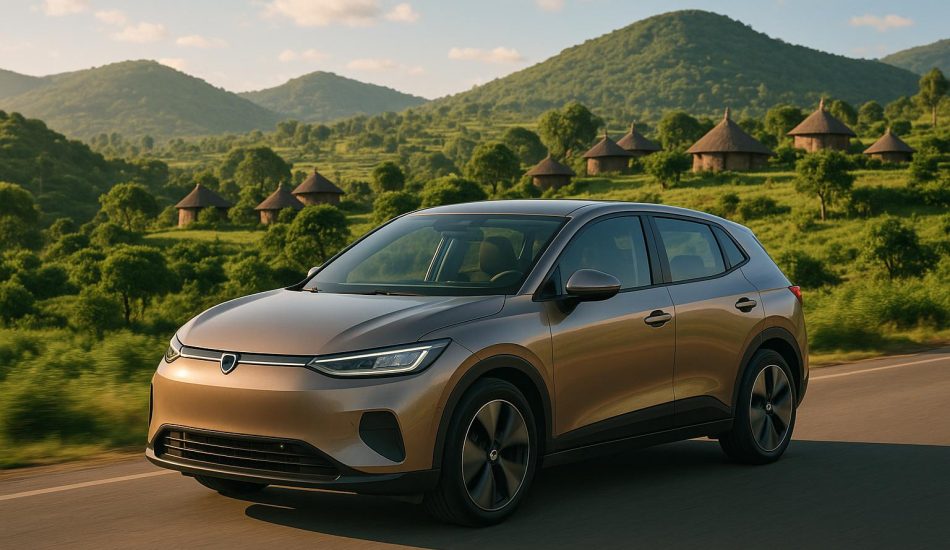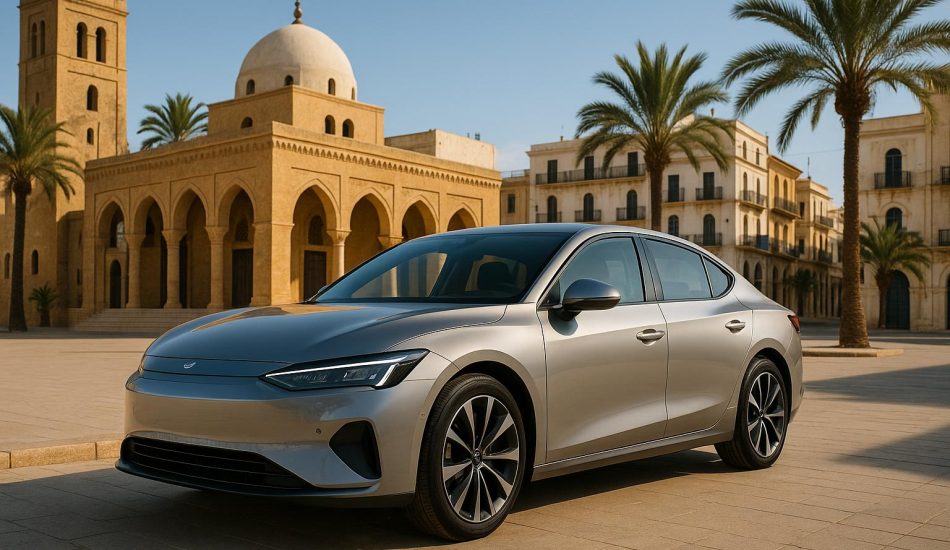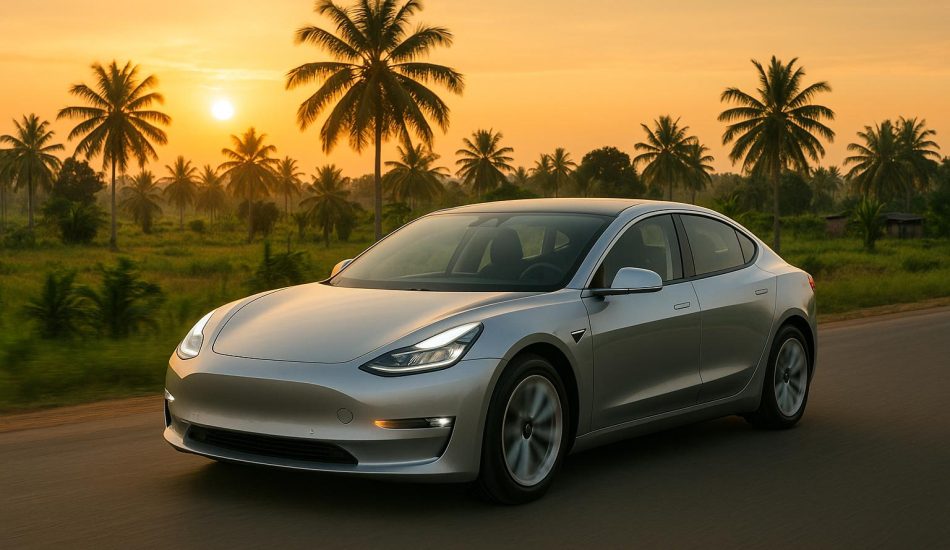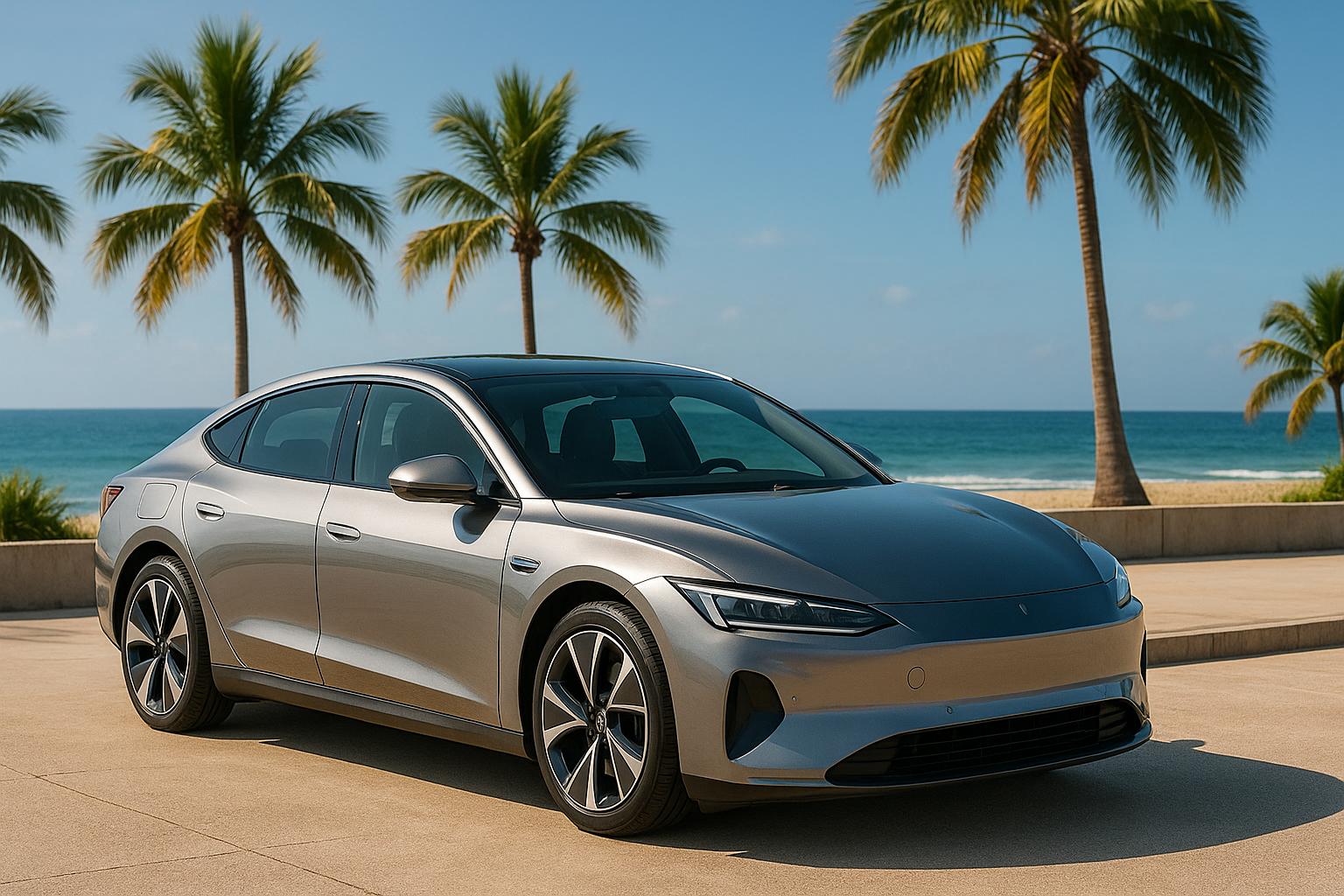
Looking to import an electric car to Mozambique in 2025? Here’s what you need to know:
- Top Picks: Models like the BYD Atto 3, MG4 Electric, and DFSK Seres 3 offer great range, charging options, and performance.
- Import Process: Prepare key documents, such as a commercial invoice, import license, and proof of insurance. Used EVs require pre-shipment inspections.
- Charging Infrastructure: While urban areas like Maputo have reliable charging, solar integration is expanding access in rural regions.
- Climate Suitability: Opt for EVs with LFP batteries and liquid cooling systems to handle Mozambique’s tropical heat.
- Costs: Expect a 27% tax on imports. Models like the DFSK Seres 3 offer the lowest 5-year ownership cost (~$51,200).
Quick Comparison
| Model | Range (miles) | Battery Type | Charging Time (DC Fast) | Price (Landed Cost) |
|---|---|---|---|---|
| BYD Atto 3 | 205–304 | LFP | 37 mins (10–80%) | $48,895 |
| MG4 Electric | 329 | NCM | 40 mins (10–80%) | $44,450 |
| DFSK Seres 3 | 251 | NCM | 30 mins (20–80%) | $35,560 |
| Toyota bZ4X | 248 | NCM | 28 mins (10–80%) | $53,340 |
| Lucid Air Pure | 420 | NCM | 25 mins (56–448 km) | $110,998 |
Pro Tip: Choose EVs with LFP batteries and liquid cooling for better performance in Mozambique’s heat.
African governments welcome Chinese electric vehicle imports, production amid looming trade war
Import Rules and Taxes for EVs in Mozambique
Bringing an electric vehicle (EV) into Mozambique requires careful attention to documentation and compliance with local regulations. The Ministry of Industry and Commerce is responsible for overseeing vehicle imports, with specific guidelines for both new and used EVs.
Required Documentation
To import an EV, you’ll need the following:
- Commercial invoice and bill of lading
- Pro forma invoice with detailed vehicle specifications
- Certificate of origin authenticated by the chamber of commerce
- Original vehicle registration papers (or a SAPS-certified copy issued within the last 3 months)
- Import license for vehicles valued over $500
- Third-party liability insurance certificate
If the vehicle is leased or financed, you must also obtain written approval from your financial institution.
Pre-Import Inspections
Used EVs must undergo a pre-shipment inspection conducted by Intertek.
Border Processing
When you reach the border, you’ll need to:
- Get a temporary import permit (TIP) at the border post.
- Provide proof of insurance that includes cross-border coverage.
- Have all required documents stamped by border authorities.
Helpful Tips for Importing
- Keep digital copies of all documents, including your passport and driver’s license.
- Confirm that your insurance policy covers cross-border travel into Mozambique.
- Request an official confirmation letter from your insurance company.
- Register with the Ministry of Industry and Commerce as a licensed importer if applicable.
These rules apply whether you’re importing an EV for personal use or as part of a commercial dealership. Following these steps ensures a smoother process and prepares you for exploring the EV charging infrastructure in Mozambique.
EV Charging Network Status
Mozambique’s power system has enough generation capacity, but distributing electricity remains a challenge. As the charging infrastructure develops, EV owners need to adjust their charging habits to match local conditions.
Grid Capacity and Distribution
Despite having an operating capacity of 2,279 MW as of 2018, the domestic distribution network faces several constraints:
- Limited Coverage: Only 34% of the population had access to electricity as of March 2021.
- Urban Concentration: Reliable charging options are mainly available in the Maputo metropolitan area.
- Industrial Priority: Stable electricity is largely reserved for major industrial consumers.
To address these issues, solar energy is becoming a practical option for localized EV charging.
Solar Integration for EV Charging
Solar power is helping expand access to EV charging, with potential yields ranging from 1,785 to 2,206 kWh/m²/year. Key developments include:
- A 14% increase in solar park production during Q1 2024.
- Plans for a 60 MW solar facility in Maputo province, backed by a US$110.6 million investment.
- A government initiative aiming to install 1,000 MW of solar capacity across five regions by 2030.
Power Stability Considerations
Hydroelectric power, which accounts for 92% of Mozambique’s installed capacity, provides stable electricity for EV charging in key areas. For effective charging, EV owners should:
- Plan Routes Around Reliable Power: Focus on areas with stable electricity access.
- Consider Home Charging Options: Use solar panels paired with battery storage for added convenience.
- Have Backup Equipment: Keep portable charging devices on hand for emergencies.
The Energy Transition Strategy (ETS) highlights solar projects as the most straightforward solution to Mozambique’s energy challenges beyond 2030.
1. BYD Atto 3 Extended Range
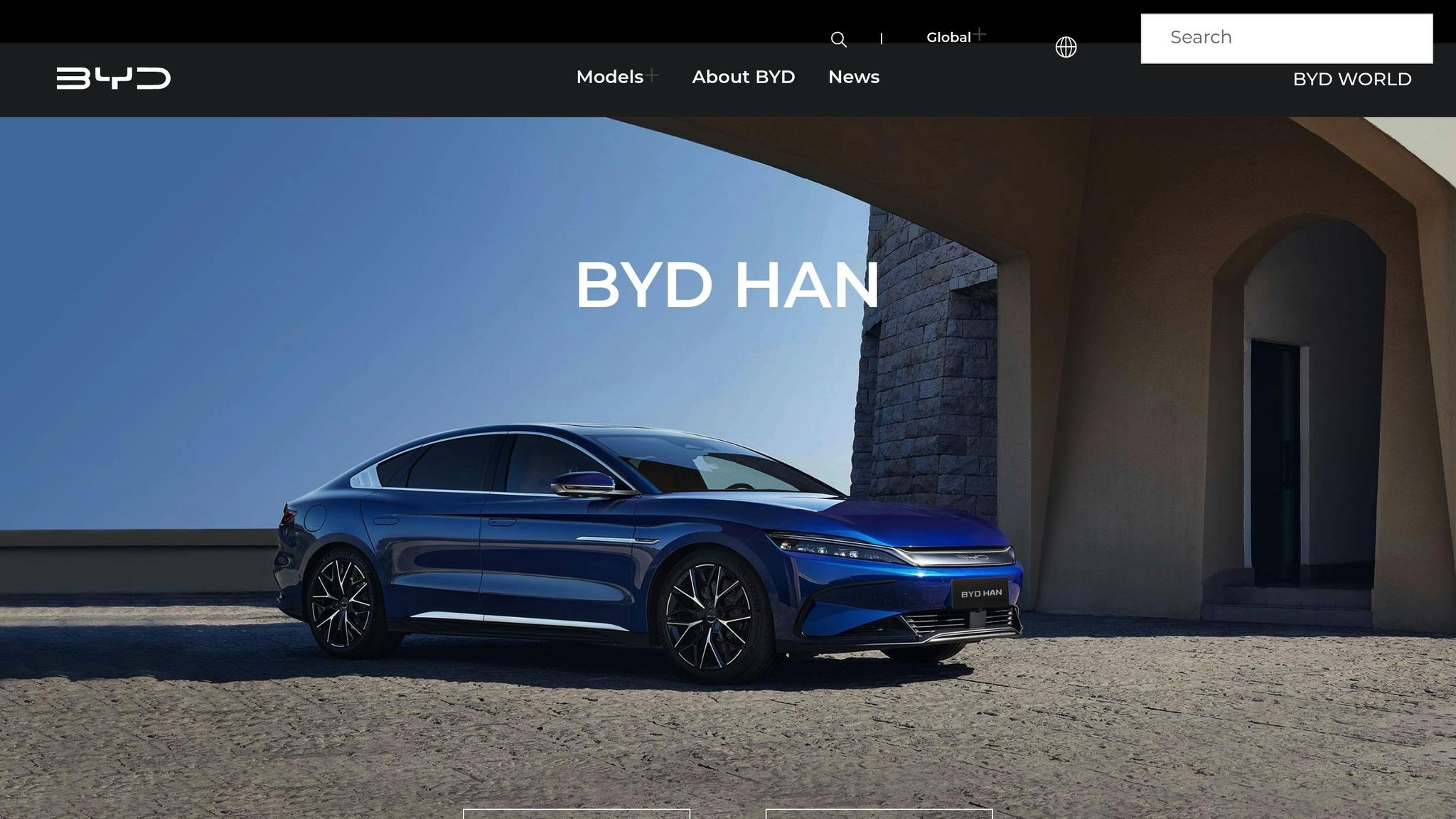
The BYD Atto 3 Extended Range is a front-wheel-drive electric SUV equipped with a 60.5 kWh Lithium-ion LFP "Blade Battery", designed to deliver reliable performance for Mozambique’s EV market.
Range and Performance
This SUV offers a combined range of about 205 miles (330 km). In optimal city conditions, it can reach up to 304 miles (490 km), while on highways in colder weather, the range may drop to 146 miles (235 km).
Powered by a 150 kW motor, it delivers 204 hp and 310 Nm of torque, enabling it to go from 0 to 60 mph in 7.3 seconds. This makes it a practical choice for both city commutes and longer trips.
Charging Options
The Atto 3 is compatible with Mozambique’s EV infrastructure, supporting both Type 2 AC charging and CCS DC fast charging. Here’s a breakdown of its charging capabilities:
| Charging Method | Time | Power |
|---|---|---|
| DC Fast Charging (10-80%) | 37 minutes | 89 kW |
| AC Home Charging (Full) | 6.5 hours | 11 kW |
Additionally, the Vehicle-to-Load (V2L) feature provides a 3.3 kW AC output, which can be particularly useful during power outages or inconsistencies.
Designed for the Climate
The Atto 3 includes a standard heat pump and uses LFP battery chemistry, ensuring reliable performance even in Mozambique’s warm climate.
Safety and Efficiency
The vehicle scores high in safety, with Euro NCAP ratings of 91% for adult occupant protection and 89% for child occupant protection. It also boasts an energy consumption rate of 156 Wh/km (WLTP), making it an economical option for daily use.
2. MG4 Electric Long Range
The MG4 Electric Long Range combines an extended driving range with solid performance and practical features. This rear-wheel drive EV is built for both city commutes and longer journeys. Let’s dive into its range, battery details, and more.
Range and Battery Specifications
The MG4 Electric Long Range comes with a 77 kWh battery pack, providing 74.4 kWh of usable capacity. It delivers a WLTP range of up to 329 miles (530 km).
Here’s how it performs in mild weather (73°F/23°C):
| Driving Condition | Range |
|---|---|
| City | 388 miles (625 km) |
| Highway | 242 miles (390 km) |
| Combined | 304 miles (490 km) |
Performance and Driving Dynamics
Powered by a 150 kW electric motor, the MG4 accelerates from 0–100 km/h in 7.9 seconds. It offers five driving modes and a rear-wheel drive system, ensuring a smooth and responsive ride.
Battery Technology and Climate Adaptation
The MG4 uses a Lithium-ion battery with NCM cathode material and operates on a 400V system. Features like a standard heat pump, battery preconditioning, and energy consumption of 152 Wh/km in mild weather add to its efficiency. The battery is backed by a 7-year/150,000 km warranty.
Smart Features and Charging
The car includes a 10.25-inch touchscreen compatible with Apple CarPlay and Android Auto. It also supports Vehicle-to-Load (V2L) functionality with a 2.2 kW AC output, which can be handy during power outages.
"There are five personalized driving modes to ensure a comfortable driving experience no matter the road conditions." – MG Motor
The MG Pilot driver-assistance suite adds an extra layer of safety and convenience, making this vehicle ideal for tackling diverse road conditions.
3. Volkswagen ID.1 Base Model
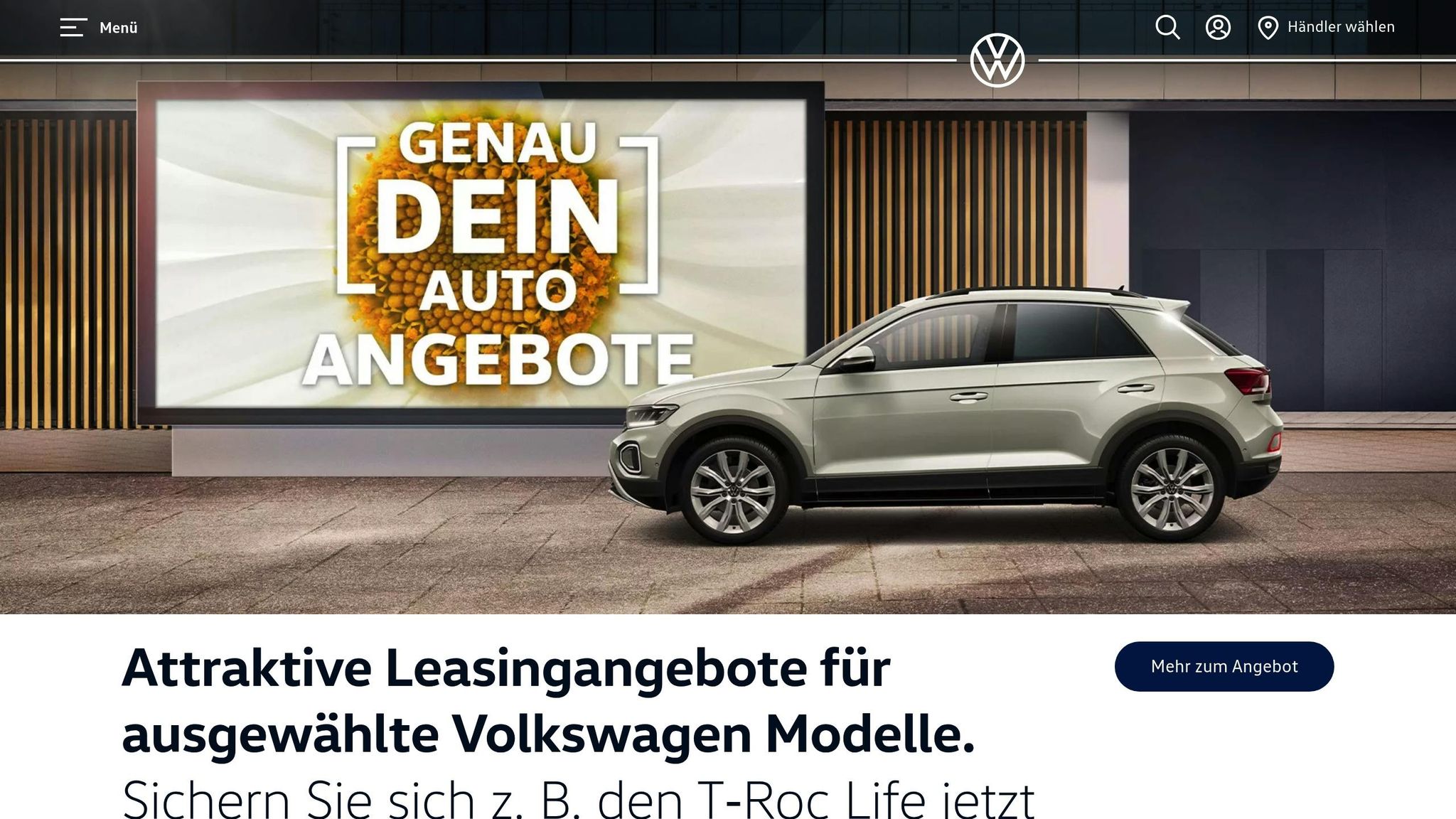
Next up in our look at import-ready electric vehicles is the Volkswagen ID.1 Base Model. This new addition to Volkswagen’s lineup will be manufactured at their facility in Portugal. While detailed specs and performance details haven’t been released yet, this model marks an important step in Volkswagen’s electric vehicle expansion. Buyers in Mozambique should keep an eye on official Volkswagen updates for the latest information on features and availability.
4. Kia EV6 Air RWD
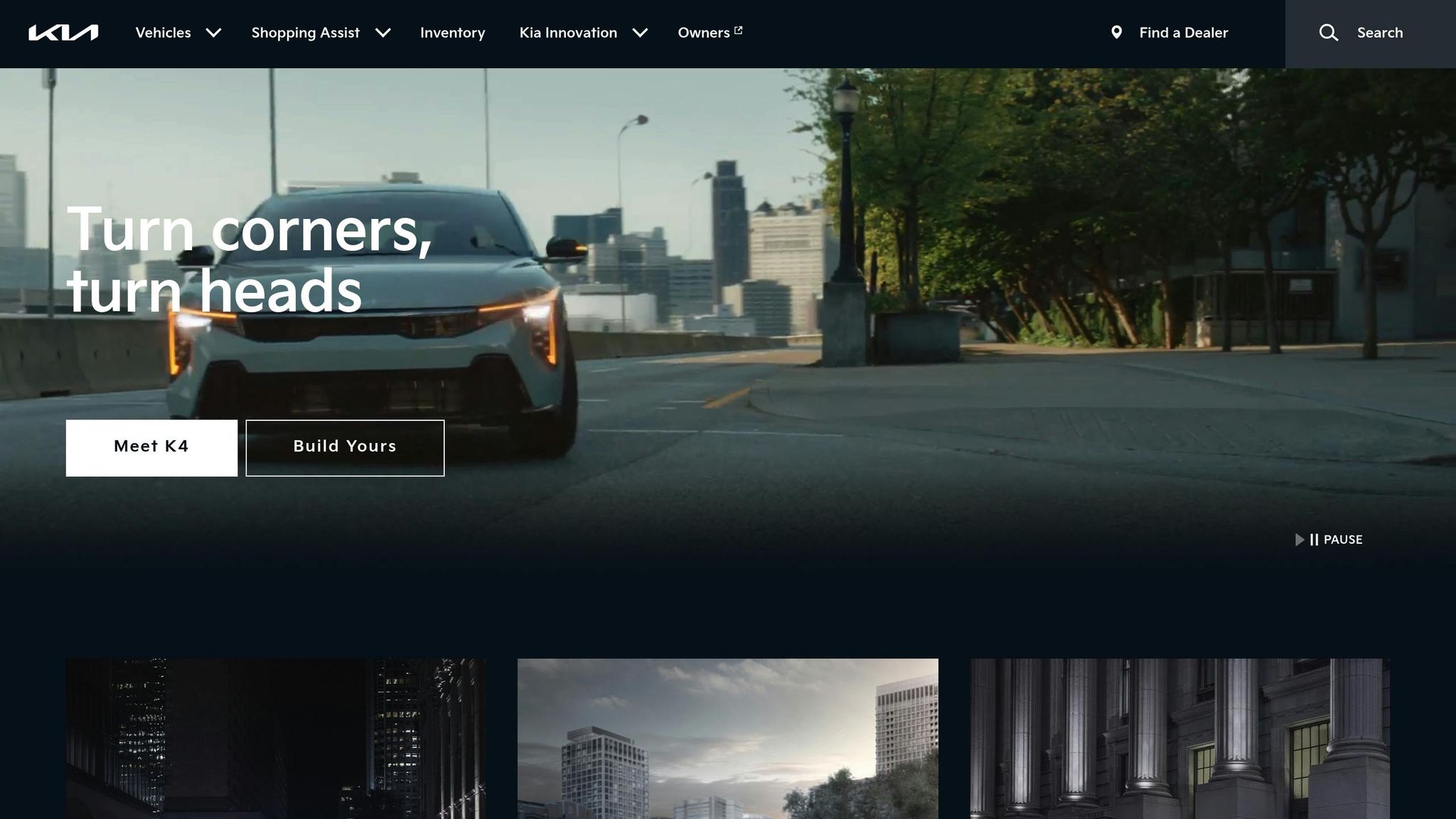
The Kia EV6 Air RWD stands out as a solid import option after the Volkswagen ID.1. It combines a practical range and reliable performance, making it a good fit for Mozambique’s roads. Equipped with a 63.0 kWh battery, it offers a WLTP range of 265 miles – ideal for both city driving and longer trips between major towns.
The EV6 delivers 167 horsepower and 350 Nm of torque, accelerating from 0 to 62 mph in 8.7 seconds. This ensures smooth power delivery and enough strength for overtaking when needed.
Here’s a breakdown of its charging capabilities:
| Charging Method | Charging Time |
|---|---|
| 11 kW AC (10–100%) | 5 hours 50 minutes |
| 50 kW DC (10–80%) | 58 minutes |
| 350 kW DC (10–80%) | 18 minutes |
From January 2025, drivers can use the Kia Access app to find charging stations and manage charging sessions. The EV6 is compatible with Type 2 AC charging and CCS DC fast charging, aligning well with Mozambique’s charging infrastructure.
In Mozambique’s warm climate, features like battery preconditioning and an energy consumption rate of 164 Wh/km help maintain consistent performance. Using DC fast charging, the car can add range at a rate of up to 1,070 km per hour under optimal conditions.
With a top speed of 115 mph, the EV6 exceeds local speed requirements. Its range and charging efficiency make it a strong contender in Mozambique’s growing EV market.
sbb-itb-99e19e3
5. DFSK Seres 3
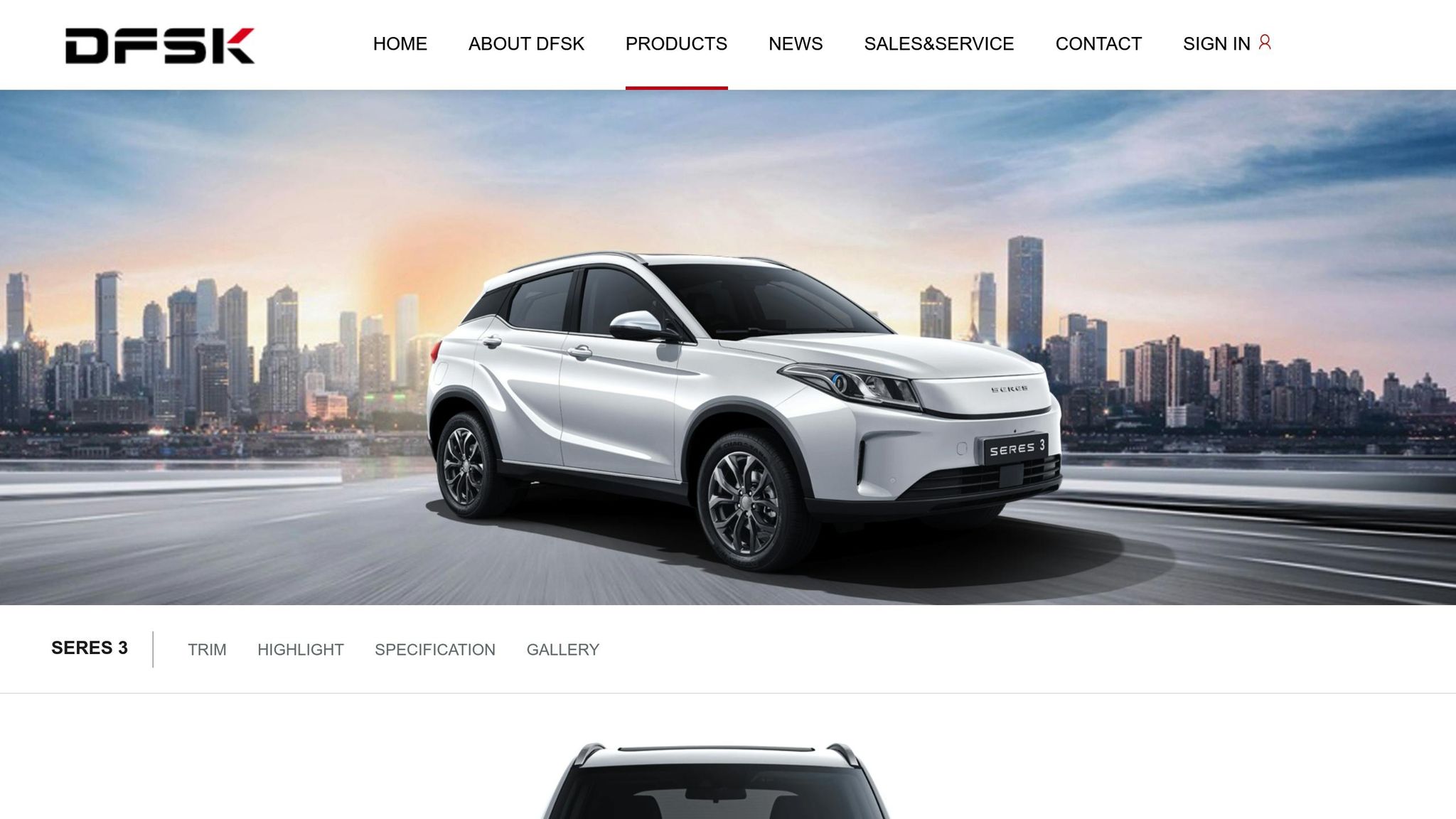
The DFSK Seres 3 is a budget-friendly electric SUV designed to handle Mozambique’s diverse road conditions. Equipped with a 52.56 kWh battery, it offers an impressive WLTP range of 405 km (251 miles), making it suitable for both city commutes and longer trips between cities.
Under the hood, the Seres 3 delivers 161 hp (120 kW) and 300 Nm of torque. Its 180 mm ground clearance and McPherson Independent front suspension ensure a smooth ride, even on uneven roads.
| Charging Method | Charging Time |
|---|---|
| AC Home Charging (6.6 kW) | 8 hours (0–100%) |
| DC Fast Charging | 30 minutes (20–80%) |
The vehicle features a GB/T charging port, so you’ll need an adapter to use local charging stations. With a price range of $25,000 to $27,000, the Seres 3 also includes three driving modes – COMFORT, ECO, and SPORT – to suit different driving preferences and improve efficiency.
Safety features include six airbags, hill start assist, downhill assist, a tire pressure monitoring system, and cruise control. The 225/55 R18 tires offer reliable stability, while electronic power steering and an electronic parking brake make driving easier and reduce upkeep.
For added convenience, consider installing a 7 kW home charger to fully recharge the battery overnight. Its compact size and sturdy build make the Seres 3 a great option for navigating cities like Maputo, Beira, and Nampula.
6. Lucid Air Pure
The 2025 Lucid Air Pure is a luxury sedan equipped with an 84-kWh battery, offering an EPA-estimated range of 420 miles when paired with 19-inch wheels. Its efficiency is rated at 5.0 miles per kilowatt-hour.
Performance-wise, it goes from 0 to 60 mph in just 4.5 seconds and completes a quarter-mile in 12.8 seconds.
| Specification | Performance |
|---|---|
| Battery Capacity | 84 kWh |
| EPA Range (19" wheels) | 420 miles |
| 0‑60 mph Time | 4.5 seconds |
| DC Fast Charging | 25 minutes (56–448 km) |
| AC Charging (22 kW) | 5 hours (0–100%) |
Charging options include a 22 kW AC charger, which takes 5 hours for a full charge, and DC fast charging, which can add 392 km (56 to 448 km) in just 25 minutes.
"The pursuit of efficiency drives Lucid as a company. We’re not just making zero-emission cars; we’re committed to making the best use of the world’s resources to maximize the benefits for electrification and the planet." – Emily Patt, Lucid Motors Senior Manager of International and Trade Policy
The base price starts at $71,400 (excluding duties and taxes). With its balance of performance and fast charging, this model fits well with Mozambique’s growing electric vehicle market.
In real-world tests, the car achieved a range of 313 miles with 20-inch wheels. For maximum range, the 19-inch wheel configuration is the better choice, offering 420 miles compared to 372 miles with 20-inch wheels.
7. Toyota bZ4X FWD
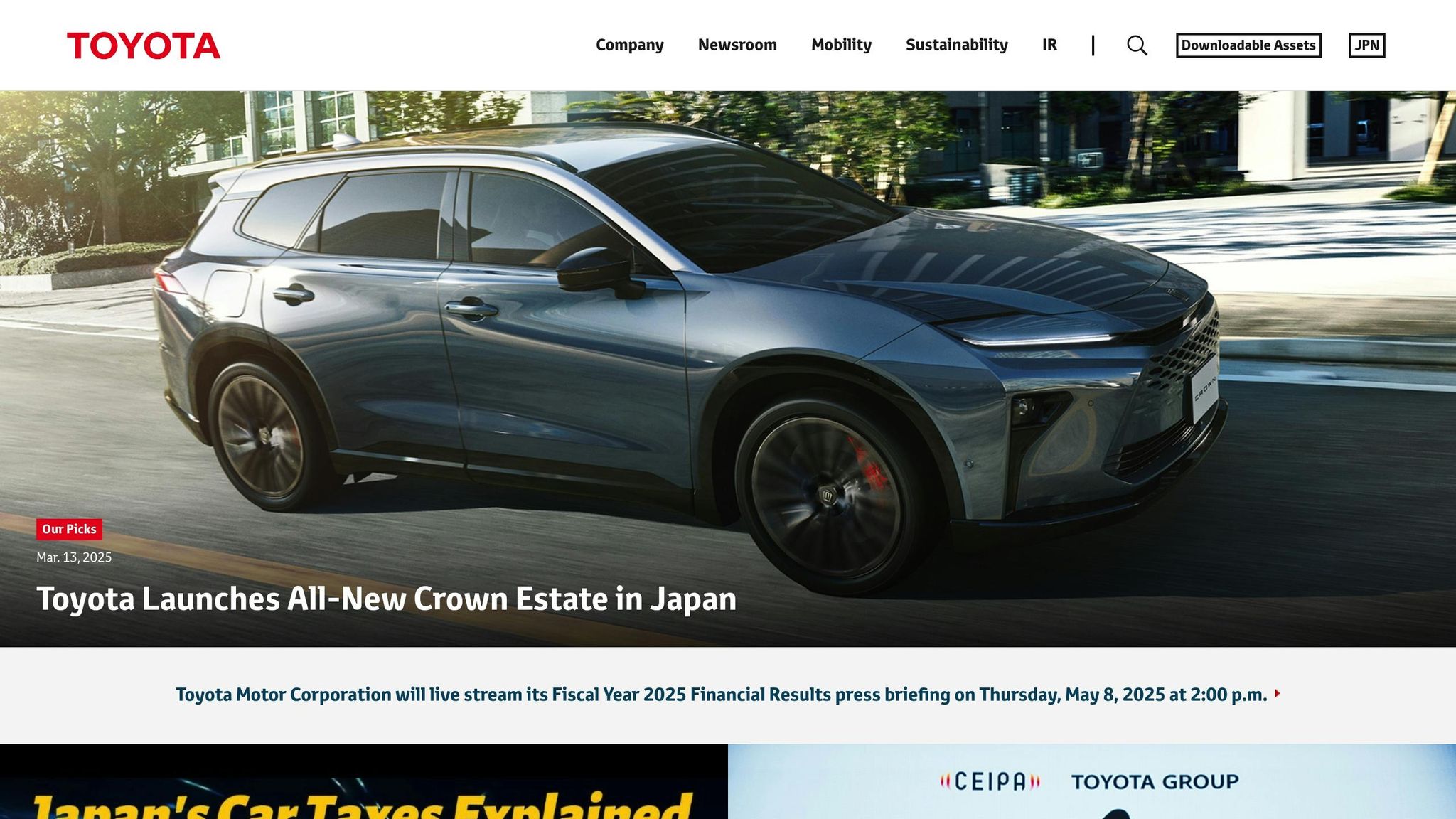
The 2025 Toyota bZ4X FWD highlights Toyota’s push toward electric mobility with a battery system offering a nominal capacity of 71.4 kWh and a usable capacity of 64.0 kWh. Let’s take a closer look at its range and energy consumption under mild weather conditions.
In temperatures around 73°F (23°C), the bZ4X achieves a real-world range of about 320 miles in the city, 199 miles on the highway, and 248 miles combined. These figures make it well-suited for Mozambique’s warm climate. Here’s how it performs across different driving scenarios:
| Driving Scenario | Range (miles) | Energy Consumption (Wh/mile) |
|---|---|---|
| City Driving | 320 | ~200 |
| Highway Driving | 199 | ~322 |
| Combined | 248 | ~257 |
The bZ4X also offers flexible charging options. Its standard 6.6 kW AC charger can fully charge the battery in about 11 hours and 30 minutes. For faster charging, the DC fast charging capability (up to 147 kW) can restore the battery from 10% to 80% in approximately 28 minutes. An optional 11 kW AC charger upgrade further reduces charging time at home. For long trips, the 1-Stop Range of about 239 miles – achievable with just 15 minutes of charging – makes planning easier.
Pricing in European markets ranges from €45,995 to €47,490, but additional costs like shipping, duties, and local taxes will affect the final price in Mozambique.
Battery Performance in Hot Weather
Mozambique’s tropical heat presents challenges for EV battery life. For instance, NCM523 batteries can lose up to 47.2% of their capacity after 100 cycles and 35% after just 10 cycles when exposed to temperatures exceeding 86°F (30°C).
To address this, effective cooling systems are crucial. These systems help reduce heat-related wear and tear on batteries. Here’s a breakdown of commonly used cooling methods:
| Cooling Method | Efficiency | Cost | Suitability for Mozambique |
|---|---|---|---|
| Liquid Cooling | Highly efficient; keeps battery temperature stable | Higher upfront cost | Best suited for tropical climates |
| Active Air Cooling | Moderate efficiency; uses air circulation | Moderate cost | Less effective in extreme heat |
| Passive Air Cooling | Basic temperature control | Lowest cost | Not ideal for high-temperature areas |
The type of battery also plays a role in heat resilience. Lithium Iron Phosphate (LFP) batteries handle high temperatures better than Nickel Manganese Cobalt (NMC) options. For Mozambique’s hot climate, EVs with LFP batteries are a practical choice.
To extend battery life, follow these tips:
- Keep the charge level between 20% and 80%.
- Park in shaded areas whenever possible.
- Plug in the vehicle with a set charge limit to prevent overcharging.
When comparing cooling methods, liquid cooling systems are far more efficient. They use two to three times less energy than air cooling to maintain the same temperature. Modern EVs are designed to operate safely in temperatures ranging from -22°F to 140°F (-30°C to 60°C), with liquid cooling systems performing exceptionally well in extreme heat.
5-Year Cost Breakdown
To understand the financial commitment of importing and owning an EV, here’s a detailed 5-year cost breakdown. This includes purchase, energy, maintenance, and financing costs. Note that each vehicle’s base price is increased by a mandatory 27% tax (10% duty and 17% VAT).
Purchase and Import Costs
| Model | Base Price | Import Taxes | Landed Cost |
|---|---|---|---|
| DFSK Seres 3 | $28,000 | $7,560 | $35,560 |
| BYD Atto 3 | $38,500 | $10,395 | $48,895 |
| MG4 Electric | $35,000 | $9,450 | $44,450 |
| Toyota bZ4X | $42,000 | $11,340 | $53,340 |
| Lucid Air Pure | $87,400 | $23,598 | $110,998 |
Energy and Maintenance Costs
At Maputo’s electricity rate of $0.11/kWh and an annual driving distance of 15,000 km, here are the estimated yearly charging and maintenance costs:
| Model | Annual Charging | Annual Maintenance | 5-Year Total |
|---|---|---|---|
| Kia EV6 RWD | $275 | $180 | $2,275 |
| VW ID.1 | $246 | $180 | $2,130 |
| BYD Atto 3 | $290 | $180 | $2,350 |
Financing Options
For buyers seeking financing, a local 8% APR loan significantly affects total costs. For instance, financing a $40,000 vehicle over five years adds approximately $8,600 in interest. However, the Mozambique Energy Fund offers a $2,000 grant for green vehicles that meet specific criteria.
Additional Costs for Tropical Climates
Living in a tropical region introduces extra costs for EV ownership:
- Rustproofing (for coastal areas): $600
- Battery coolant replacement (every 3 years): $220
- Grid stabilizer (for rural charging setups): $350
Best Value Proposition
When all factors are considered, the DFSK Seres 3 stands out with the lowest total 5-year ownership cost, approximately $51,200. This is about 22% cheaper than comparable internal combustion vehicles.
Key Notes
- Most EV manufacturers provide a 7-year battery warranty, ensuring at least 70% capacity retention.
- Basic maintenance is recommended every 20,000 km.
Mozambique’s growing graphite exports are contributing to the development of a local battery service network, which could reduce maintenance costs in the future. Compared to traditional vehicles, EVs save about 40% on maintenance due to fewer moving parts and regenerative braking systems.
Required Vehicle Modifications
Imported EVs need specific adjustments to handle Mozambique’s demanding climate. Key changes, like improving thermal management systems and choosing tires designed for high temperatures, can help reduce battery wear and maintain safety.
Thermal Management Upgrades
When temperatures hit 100°F (37.8°C), EV range can drop by as much as 31%. Enhancing the vehicle’s Thermal Management System (TMS) can help limit these effects.
| Component | Upgrade | Purpose |
|---|---|---|
| Battery Cooling | Increase TMS capacity | Keeps the battery at an ideal temperature to reduce range loss. |
| Cabin Pre-cooling | Use grid-powered cooling | Lowers battery usage by pre-cooling the cabin before starting. |
High heat also increases battery resistance, which can lead to longer charging times. Addressing tire performance is the next step.
Tire Specifications
Tire performance is directly impacted by temperature changes. For example, a 30-degree rise in ambient temperature can cause tire pressure to increase by about 3 PSI. To maintain safety and ensure consistent handling, choose tires specifically designed for high-temperature conditions.
Conclusion
When selecting an EV for Mozambique, focus on factors like range, charging compatibility, and overall cost. Models such as the BYD Atto 3 Extended Range and MG4 Electric Long Range have shown dependable performance in local conditions.
The import process is smoother when using established platforms that manage:
- Customs clearance documentation
- Local vehicle registration
- Shipping logistics
- Compliance checks
These services help ensure an efficient transition from purchase to ownership.
| Key Consideration | Impact on Ownership |
|---|---|
| Range Performance | Important for intercity travel and areas with limited charging infrastructure |
| Climate Suitability | Vital for maintaining battery efficiency in Mozambique’s high-temperature climate |
| Support Services | Influences the ease of importation and long-term vehicle maintenance |
Local modifications can further optimize performance, tailoring each EV to Mozambique’s specific needs. Careful planning and preparation make importing an EV in 2025 a practical option. With growing charging infrastructure and reliable support services, switching to electric mobility is a forward-thinking decision.
FAQs
What should you consider when selecting an electric car with the right battery type for Mozambique’s climate?
When choosing an electric car for Mozambique, it’s crucial to consider the battery type and how it performs in the local climate. Look for batteries like LFP (Lithium Iron Phosphate), which are more durable in high temperatures, or NMC (Nickel Manganese Cobalt) for a balance of range and affordability.
Additionally, think about the availability of charging infrastructure and how well the car’s battery chemistry aligns with Mozambique’s warm climate. Batteries that can handle heat efficiently will ensure better performance and longevity. Prioritize options that are cost-effective and sustainable to meet both your needs and the country’s infrastructure capabilities.
What steps should I take to ensure my imported electric car complies with Mozambique’s import rules and regulations?
To ensure your imported electric car complies with Mozambique’s regulations, make sure it meets the country’s import requirements and documentation standards. Start by verifying that your vehicle aligns with Mozambique’s import policies, including pre-shipment inspections and customs clearance procedures.
You will also need to obtain the necessary licenses through the National Directorate of Trade under the Ministry of Industry and Commerce. Partnering with a trusted platform like EV24.africa can simplify the process, as they handle compliance with international trade standards and ensure a smooth import experience. Proper preparation will help you avoid delays and additional costs.
What are the main challenges and potential solutions for building EV charging infrastructure in rural Mozambique?
Rural Mozambique faces several challenges in developing electric vehicle (EV) charging infrastructure. These include low population density, which reduces demand and discourages private investment, and limited access to reliable power grids and internet connectivity, making it difficult to install and operate charging stations. Additionally, the higher cost of setting up and maintaining infrastructure in remote areas adds to the complexity.
Potential solutions include leveraging renewable energy sources like solar power to create off-grid charging stations, which can be more sustainable and cost-effective. Government incentives and partnerships with private companies can also encourage investment in these areas. By focusing on scalable, localized solutions, Mozambique can make EV adoption more accessible, even in rural regions.


